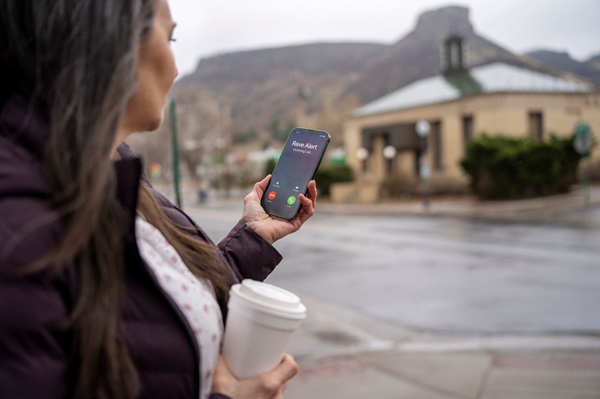In the last couple of weeks, we have been reflecting on our conversations with communities on bettering community safety and communication during election season. These locations’ ability to function effectively and efficiently are vital to every community across the country. These facilities, however, are typically located in common spaces of municipalities, such as schools, community centers, town halls, and more. Polls are temporary set-ups, staffed by members of the community looking to participate in local civil service. Wherever a polling location is, they are in places known to be active soft targets.
The Department of Homeland Security’s Cybersecurity & Infrastructure Security Agency (CISA) calls these sites “soft targets and crowded places” and defines them as “locations that are easily accessible to large numbers of people and that have limited security or protective measures in place making them vulnerable to attack.” Polling locations have become a part of the conversation surrounding the increase of attacks, completed or prevented, on soft targets. In this, first responders and emergency managers have had to put more and more safety protocols into place at polling places to ensure the poll workers and the voting public can cast their ballot safely.
Last year, one of the findings in our 2021 Survey of Public Trust: Emergency Communication and Public Safety indicated about 75% of survey respondents are either very or somewhat concerned about acts of violence in public places. In looking over these concerns, there are four trends that municipalities are talking about for what to utilize to better prepare for emergency communications at polling locations.
Trend 1: Installing Panic Button Technology at Each Polling Site
At polling sites, it is not typical to have first responders on standby at each location, as it would not be feasible to station a law enforcement officer while also maintaining proper staffing for the community at large. Therefore, if an emergency does occur at one of these locations, poll workers in many jurisdictions are calling 9-1-1, just as the normal public and notice to other important stakeholders is not known until well into or after the incident has been responded to. Since polling locations can become a high-risk soft target, it is important that all relevant officials are notified are dispatched quickly to mitigate emergencies.
With a panic button application, poll workers would be able to simultaneously reach 9-1-1, first responders, government officials, and polling management staff with just the touch of a button. Whether an active assailant, medical, fire, or other emergency, law enforcement and first responders will have access to this information and will be better equipped to arrive on scene prepared. The accurate reporting of what type of incident is occurring as well as precise location data and dynamic status checks on those involved helps reduce emergency response times, which could end up saving a life. With such sensitive information and activities taking place at the polls, it is important that emergencies at these locations are prioritized, which a panic button can expedite through the installation of this tool.
Trend 2: Enhancing Current Mass Notification System
When an emergency, or even, a delay in operations is affecting the polling place, it is important for voting authorities to be able to send out messages quickly and easily internally to poll workers, as well as externally, i.e., those who plan on voting that precinct. This could include messages about the issue itself, relevant updates, and actions for the poll worker or voter to take in order to continue their duties.
Here, mass notifications can enable authorities to send messages across agencies or departments, and external messages out to the public simultaneously, through text, email, voice calls, digital signage, and desktop alerts — all through a single launch point. All of these messages can be sent out to specified audiences created through geofencing capabilities that can coordinate with voting district maps. An important note, for external messages, residents can receive messages in the modes and languages they prefer, enabling these agency notifications to become the source of trusted information.
Trend 3: Implementing Two-Way Texting Capabilities for Poll Workers to Discreetly Report Concerns at the Polling Place
In this scenario, a voting authority can allow poll workers to report suspicious activity and other concerns. Administrators can then track submissions and discreetly communicate with the poll worker on next steps. That administrator can then use that communication system to provide a more holistic insight in regard to incidents that occur during election day. This can allow municipalities to prepare for the next election in understanding where additional resources may need to be deployed.
Additional benefits of this type of communication system include the following:
- Confirmations: With time-sensitive events, those who receive emergency alerts can confirm they have received the message, assuring authorities that their messages are being picked up by the right people.
- Status Checks: A two-way communications system can provide survey features that allow authorities to conduct wellness check surveys. Following emergency and nonemergency events, those assigned administrators can reach out to their employees to make sure they are safe, accounted for, and ready for the next steps in processing votes.
Trend 4: Utilizing an Incident Collaboration Tool to Track Polling Location Safety Procedures
As emphasized throughout this entry, being able to keep on top of poll station’s wellness and status is imperative for the potential emergencies that can occur at those sites. Most polling stations rely on a disaggregated system of communications and accountability typically only preserved on paper and turned in via email or in person. Not all polling locations are near the headquarter so these updates can take time to understand and know when each place is ready for next steps. In an emergency, this system is less than ideal.
Through an incident collaboration platform, voting authorities can launch an action sequence and those who are assigned certain tasks will receive alerts simultaneously. Tasks will be listed, show who they were assigned to, indicate the status of the tasks, and display additional notes, providing administrators with a detailed timeline. This system can keep voting authorities aware of each polling location’s general wellness status, and then make sure that when an incident needs a response from those on the ground, that a safety protocol can be implemented quickly and according to the training that poll workers receive prior to election day.
These elements can positively contribute to a reliable critical communication and collaboration platform which will ultimately allow poll workers, emergency managers, first responders, and government officials to better manage and minimize safety concerns.





Comments are closed here.